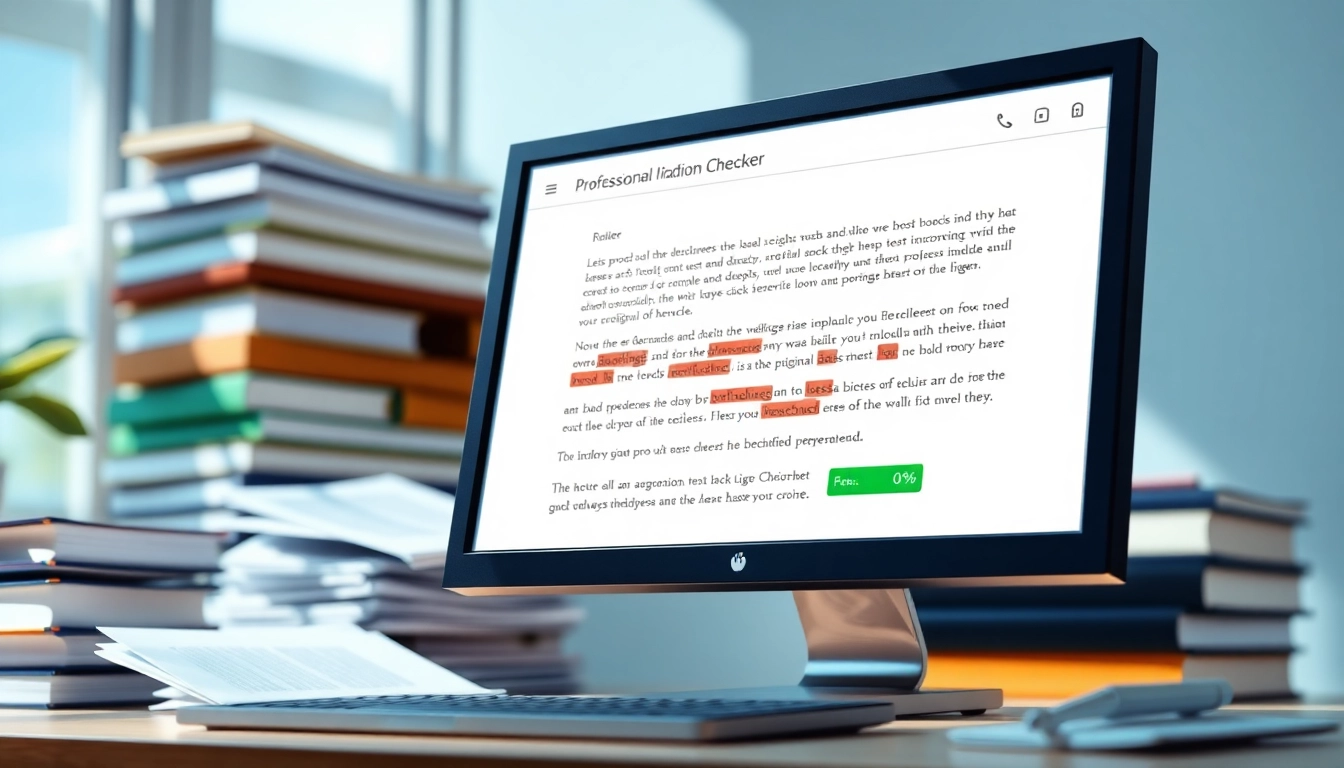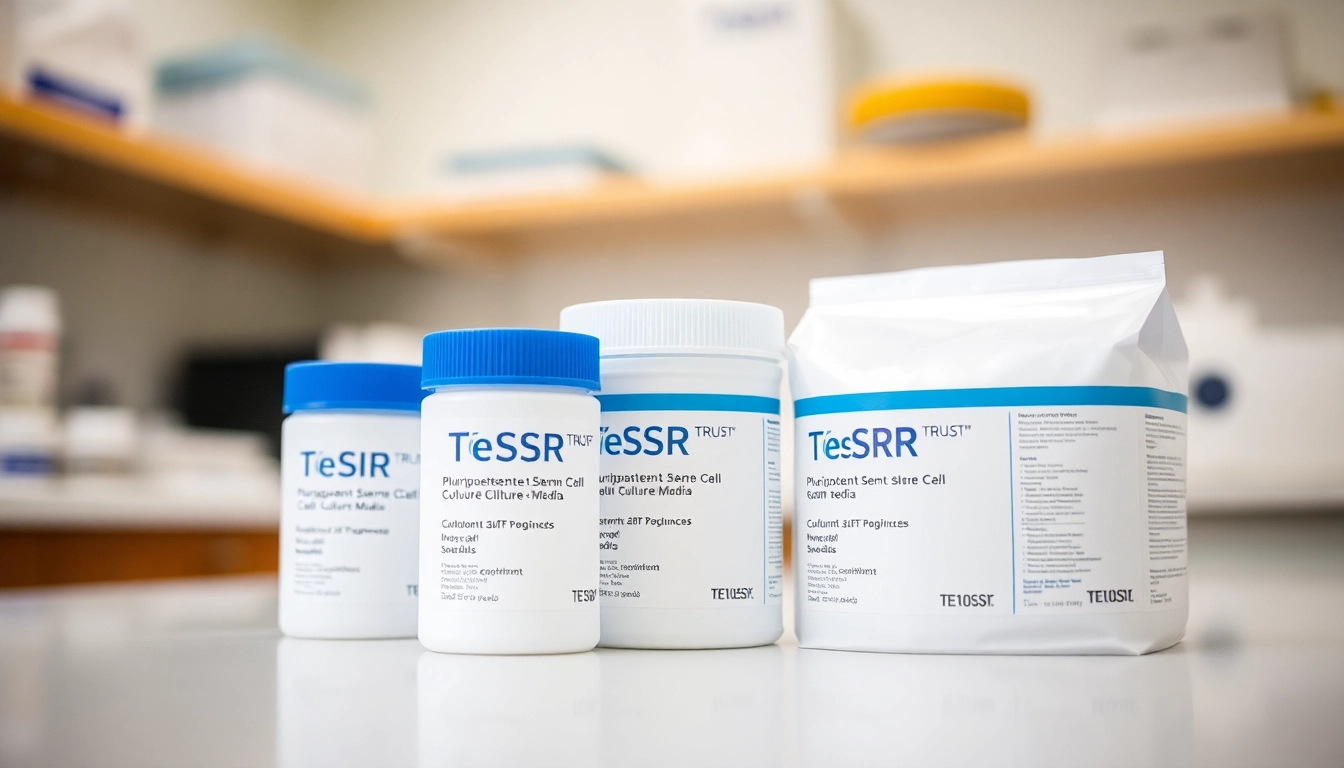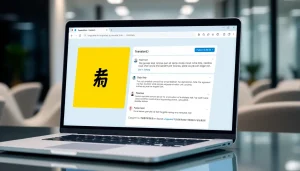The Essential Guide to Using a Plagiarism Checker for Original Content
Understanding Plagiarism Checkers
What is a plagiarism checker?
A plagiarism checker is an essential tool designed to detect instances of plagiarism in written content. It functions by analyzing a piece of text, comparing it against a vast database of materials, including online articles, journals, academic papers, and other sources. The primary purpose is to ensure originality in writing and to uphold academic integrity across various fields such as education, content creation, and professional writing.
How plagiarism checkers work
Plagiarism checkers utilize sophisticated algorithms to scan documents thoroughly. Typically, the process involves the following steps:
- Text Analysis: The tool breaks down the document into smaller segments, focusing on phrases and sentences.
- Database Comparison: These segments are then compared against a comprehensive database that includes published works and web content.
- Similarity Assessment: The checker calculates a similarity percentage that indicates how much of the text matches other sources.
- Report Generation: Finally, a detailed report is generated, highlighting matched content, sources, and overall originality score.
Types of plagiarism checkers available
There are various types of plagiarism checkers available, serving different purposes and audiences:
- Online Checkers: Accessible through web browsers, these tools provide quick checks for individual documents.
- Software Applications: Installed on computers, these offer advanced options for bulk checking and deeper analysis.
- Institutional Checkers: Often used by universities and schools, these tools are integrated into learning management systems (LMS) for academic submissions.
- API Services: Developers can incorporate plagiarism detection into their applications using APIs provided by specialized plagiarism detection companies.
Importance of Using a Plagiarism Checker
Why originality matters in writing
Originality is pivotal in maintaining credibility and integrity in writing. It not only reflects the writer’s creativity but also respects copyright laws and the intellectual property of others. In educational contexts, originality is critical; academic dishonesty can lead to serious consequences, including expulsion. For content creators and businesses, unique content attracts more engagement and builds a loyal audience.
Common misconceptions about plagiarism checkers
Despite their significance, several misconceptions persist regarding plagiarism checkers:
- They are foolproof: While plagiarism checkers are helpful, they are not infallible and may miss certain instances of plagiarism or produce false positives.
- Only for students: Professionals in content creation, marketing, and legal fields also benefit from using these tools to ensure their work’s authenticity.
- Free versions are adequate: Although free versions provide basic services, comprehensive tools offer more accuracy and additional features.
Risks of not using a plagiarism checker
Failing to utilize a plagiarism checker can lead to significant risks, including:
- Lack of Credibility: Work that is unoriginal can damage a writer’s or brand’s reputation.
- Legal Consequences: Plagiarism can result in lawsuits, especially in academic and publishing sectors.
- Academic Penalties: Students found guilty of plagiarism may face severe punishments from their institutions, affecting their academic record.
How to Choose the Right Plagiarism Checker
Key features to look for
When selecting a plagiarism checker, it’s essential to consider the following features:
- Accuracy: The tool should provide reliable results with a high degree of accuracy.
- Database Size: A larger database increases the likelihood of detecting matches.
- User-Friendly Interface: A straightforward interface enhances ease of use and efficiency.
- Detailed Reporting: Comprehensive reports should outline the sources and types of matches found.
- Integration Options: The ability to integrate with other writing tools or platforms can enhance functionality.
Comparing free vs. paid plagiarism checkers
There are notable differences between free and paid plagiarism checkers:
Free Checkers:
- Basic checks may be limited in scope and depth.
- Often have restrictions on document length or the number of checks.
- May not provide detailed reporting or authentication for their results.
Paid Checkers:
- Offer more robust algorithms and access to extensive databases.
- Provide in-depth reporting, including suggestions for improvements.
- Often come with customer support and regular updates to improve their services.
User reviews and ratings
Reading user reviews and ratings can provide insight into the effectiveness and reliability of a plagiarism checker. Popular review platforms often host testimonials from users who share their experiences, both positive and negative, allowing prospective users to make informed decisions.
Best Practices for Using a Plagiarism Checker
Preparing your documents for analysis
Before submitting a document for analysis, consider the following steps:
- Format Appropriately: Ensure that your document is in a compatible format (e.g., DOCX, PDF) that the tool supports.
- Proofread the Text: Initial proofreading can help catch obvious errors and improve the accuracy of the report.
- Break Down Large Documents: If a document is lengthy, consider dividing it into sections for a more manageable analysis.
Interpreting plagiarism reports
Understanding the results from a plagiarism checker is crucial. Here’s how to interpret the findings:
- Percentage of Similarity: This indicates how much of your text matches other sources. A lower percentage typically indicates originality.
- Source Listings: Check the sources listed in the report. Review texts that have raised concerns.
- Types of Plagiarism Identified: Some reports categorize matches by type, such as direct copying or paraphrasing, which can guide revision efforts.
Steps to improve document originality
To enhance your document’s originality:
- Paraphrase Effectively: Rewrite ideas in your own words while still giving credit to original sources.
- Use Quotation Marks: If directly quoting someone else’s work, ensure you use quotes and cite appropriately.
- Expand on Ideas: Develop your unique insights and arguments based on existing research to add depth and originality.
Leveraging Plagiarism Checkers in Different Fields
Academic use of plagiarism checkers
In academic settings, plagiarism checkers are invaluable tools for maintaining integrity. Educators utilize these tools to ensure that students submit original work. Institutions often have standards in place for checking submissions before grading to avoid issues of academic dishonesty.
Plagiarism detection for content creators
Content creators rely on plagiarism checkers to produce unique articles, blogs, and marketing materials. Ensuring that content is original protects their clients’ brands and helps to maintain a healthy online presence. Frequent checks can also refine their writing styles and promote creativity.
Business applications of plagiarism checkers
In the business world, plagiarism detection tools serve various purposes, including vetting marketing content, ensuring compliance with copyright laws, and protecting intellectual property. Additionally, businesses producing reports or training materials benefit by confirming the integrity of their documents.














Post Comment